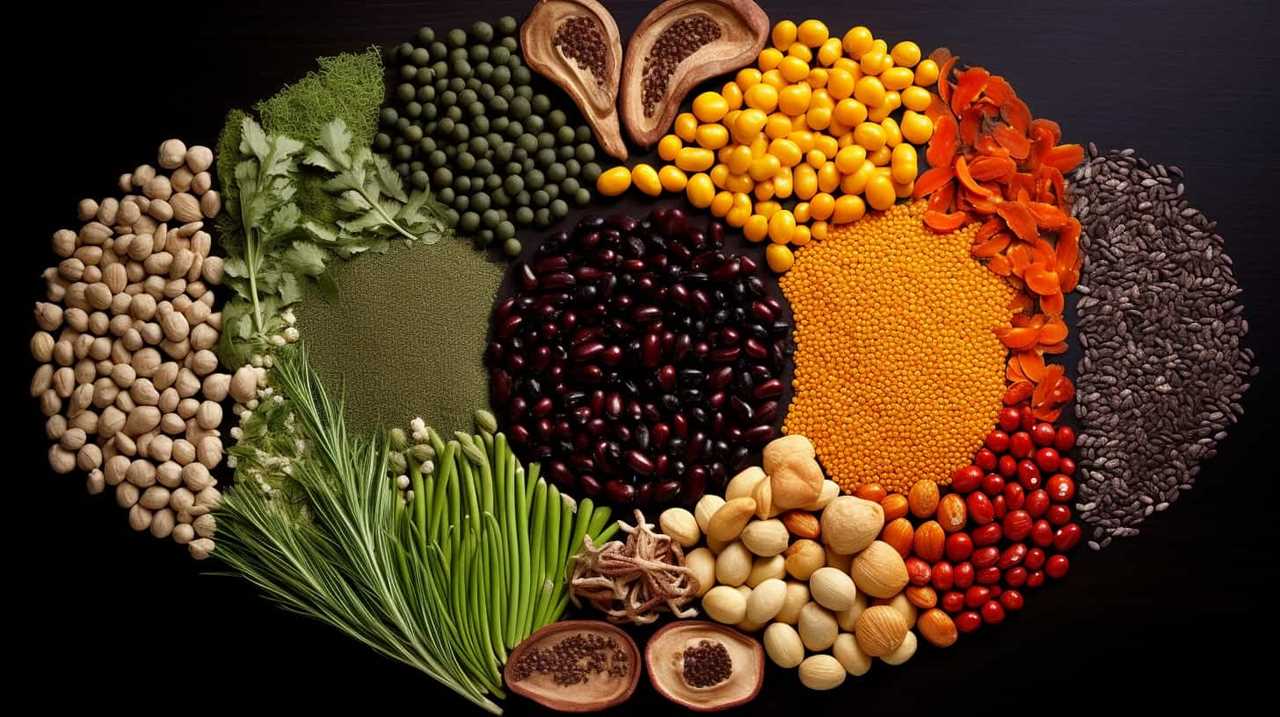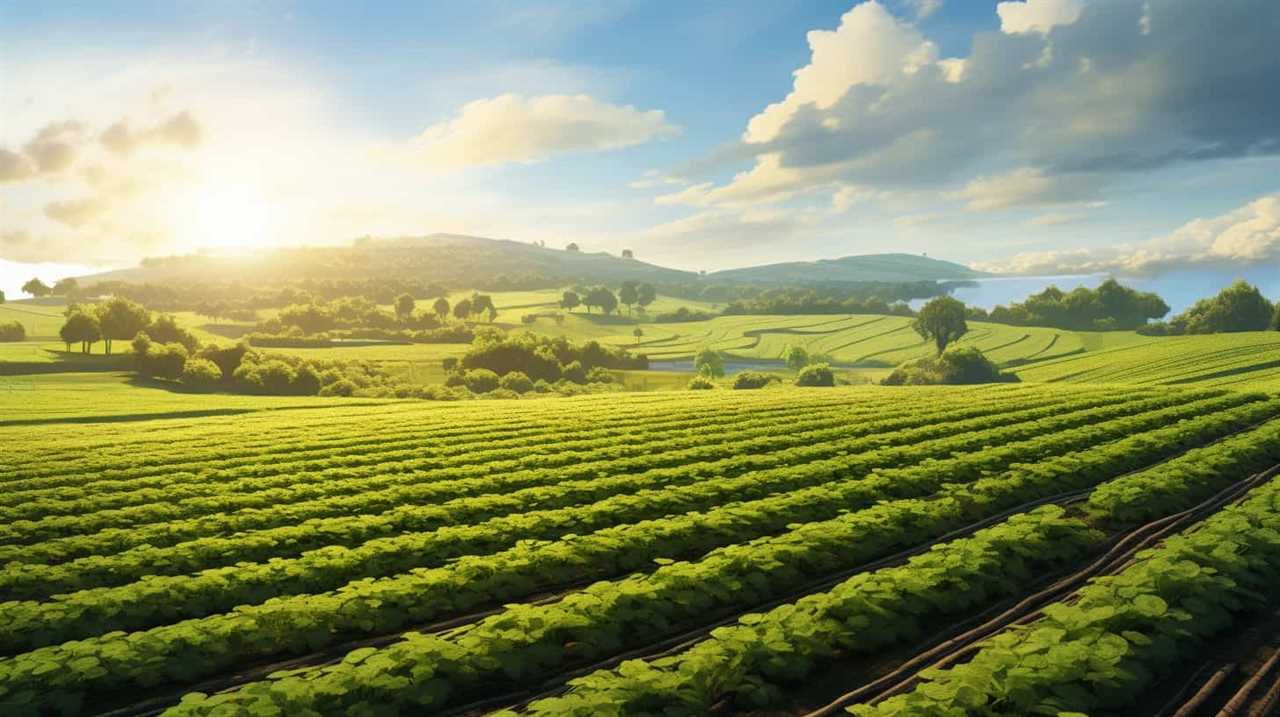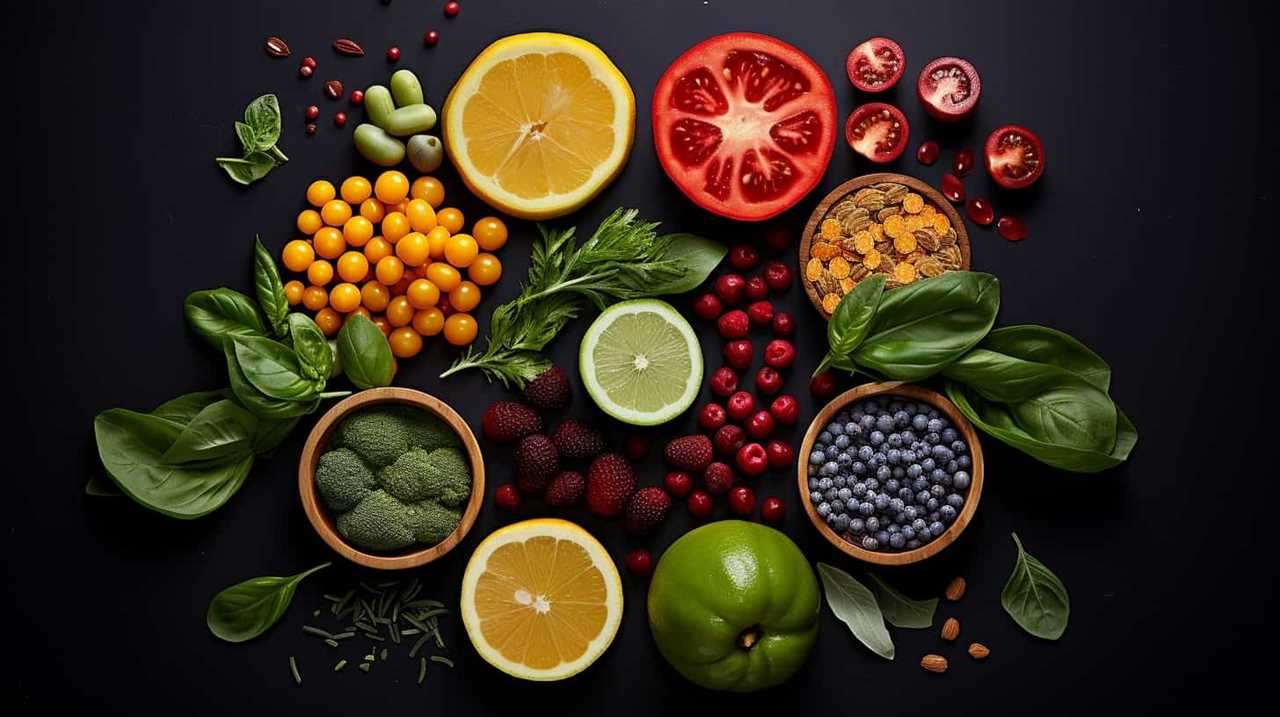Are you in search of a multifunctional superfood to boost your health and wellness? Search no more, because chia seeds are here for you! We’ve uncovered the incredible advantages of chia seeds and are eager to share these discoveries with you.
From boosting energy levels to aiding digestion, these tiny seeds pack a powerful punch. In this article, we’ll show you how to incorporate chia seeds into your diet, compare them to other superfoods, and provide tips for buying and storing them.
Get ready to embark on a journey to better health with chia seeds!
Key Takeaways
- Chia seeds have numerous health benefits including boosting energy levels, aiding digestion, promoting heart health, supporting weight management, and improving blood sugar control.
- Chia seeds can be easily incorporated into various dishes such as smoothies, yogurt, salads, oatmeal, cereal, baking recipes, and chia seed pudding.
- Chia seeds are nutritionally dense, containing high levels of fiber, protein, omega-3 fatty acids, and antioxidants.
- Compared to other superfoods like flaxseeds, chia seeds offer more fiber and protein, and they are a great source of plant-based omega-3 fatty acids.
Health Benefits of Chia Seeds
Why are chia seeds considered a healthy addition to our diet?

Chia seeds have gained popularity due to their impressive nutritional profile and potential health benefits. These tiny seeds are packed with essential nutrients, including fiber, protein, healthy fats, vitamins, and minerals.
They’re also rich in antioxidants, which help protect our cells from damage caused by free radicals. Research suggests that incorporating chia seeds into our diet may promote a healthy heart by reducing cholesterol levels and blood pressure.
Additionally, chia seeds have been shown to support digestion, aid in weight management, and improve blood sugar control. Their high fiber content helps to keep us feeling full and satisfied, reducing the risk of overeating.
How to Incorporate Chia Seeds Into Your Diet
To start incorporating chia seeds into our diet, we can explore various delicious recipes that feature this nutritious ingredient. Chia seeds are packed with essential nutrients, including fiber, protein, omega-3 fatty acids, and antioxidants. They are also low in calories and high in soluble fiber, making them a great addition to a weight loss diet.

One way to incorporate chia seeds is by adding them to smoothies or yogurt for a nutritious boost. They can also be used as an egg substitute in baking recipes, or sprinkled on top of salads, oatmeal, or cereal. Chia seed pudding is another popular option, where chia seeds are soaked in liquid to create a creamy and satisfying dessert.
Here is a table that highlights the nutritional benefits of chia seeds:
| Nutrient | Amount per 1 oz (28g) |
|---|---|
| Fiber | 10.6 grams |
| Protein | 4.7 grams |
| Omega-3 fatty acids | 4,915 mg (ALA) |
| Antioxidants | High levels |
| Calories | 138 |
Incorporating chia seeds into our diet not only provides us with essential nutrients but also supports weight loss goals.
Chia Seeds Vs. Other Superfoods
When comparing chia seeds to other superfoods, we can see that they offer a unique combination of essential nutrients and health benefits. Here is a comparison of chia seeds with other superfoods:

-
Nutritional Value: Chia seeds are packed with nutrients such as omega-3 fatty acids, fiber, protein, and antioxidants. They’re also a good source of minerals like calcium, magnesium, and iron. Compared to other superfoods like flaxseeds, chia seeds contain more fiber and protein, making them a great addition to a balanced diet.
-
Omega-3 Fatty Acids: Chia seeds are one of the best plant-based sources of omega-3 fatty acids. They contain a higher concentration of omega-3s compared to flaxseeds. These essential fatty acids have been linked to numerous health benefits, including reducing inflammation and promoting heart health.
-
Versatility: Chia seeds can easily be incorporated into various dishes, such as smoothies, yogurt, oatmeal, and baked goods. They can also be used as a vegan egg substitute in recipes. This versatility makes chia seeds a convenient and nutritious choice for individuals looking to enhance their diet.
Tips for Buying and Storing Chia Seeds
For optimal freshness and quality, it’s important to know some tips for buying and storing chia seeds.

When buying chia seeds, it’s crucial to choose a reputable brand or supplier to ensure that you’re getting a high-quality product. Look for organic and non-GMO certifications on the packaging, as these indicate that the seeds have been grown without the use of harmful chemicals. Additionally, check the expiration date to ensure that the seeds are still fresh.
When it comes to storing chia seeds, it’s best to keep them in an airtight container in a cool and dry place, away from sunlight and moisture. This will help to preserve their nutritional value and prevent them from going rancid.
Following these buying and storage tips will ensure that your chia seeds stay fresh and nutritious for a longer period of time.
Chia Seeds Recipes and Ideas
Now let’s explore some delicious and creative ways we can incorporate chia seeds into our meals and snacks. Chia seeds are versatile and can be easily incorporated into various recipes, adding a nutritional punch to our dishes. Here are three ideas to get you started:

-
Chia Seeds Pudding:
Mix chia seeds with your favorite plant-based milk, such as almond or coconut milk, and a sweetener of your choice. Let it sit in the fridge overnight, and in the morning, you’ll have a creamy and nutritious pudding. Top it with fresh fruits or nuts for added flavor and texture. -
Chia Seeds Smoothies:
Add a spoonful of chia seeds to your favorite smoothie recipes. The seeds will thicken the smoothie and provide a boost of fiber and omega-3 fatty acids. You can also soak the chia seeds in water beforehand to create a gel-like consistency that blends seamlessly into your smoothie. -
Chia Seeds Energy Bars:
Combine chia seeds with nuts, dried fruits, and sweeteners like honey or maple syrup to create homemade energy bars. These bars are perfect for a quick and healthy snack on the go.
Incorporating chia seeds into our meals and snacks is a simple and tasty way to add a nutritious twist to our diet. Give these recipes a try and enjoy the health benefits that chia seeds have to offer.

Frequently Asked Questions
Are Chia Seeds Safe to Consume During Pregnancy or While Breastfeeding?
During pregnancy or while breastfeeding, it’s important to consider the safety of chia seeds. We have found that chia seeds are generally safe to consume and can provide beneficial nutrients for breastfeeding mothers.
Can Chia Seeds Help With Weight Loss and How Should They Be Consumed for Maximum Benefits?
Chia seeds can aid in weight loss due to their high fiber and protein content. To maximize benefits, consume them by adding to smoothies, yogurt, or oatmeal. Incorporating chia seeds into a balanced diet and exercise routine can support healthy weight management.
Are There Any Potential Side Effects or Risks Associated With Consuming Chia Seeds?
We want to inform you about the potential side effects and risks of consuming chia seeds. These may include potential allergic reactions and an impact on blood sugar levels.
Can Chia Seeds Be Used as a Substitute for Eggs in Baking Recipes?
Chia seeds can be used in vegan cooking as a binding agent in recipes, making them a potential substitute for eggs in baking. They are rich in fiber, omega-3 fatty acids, and minerals.

How Do Chia Seeds Compare in Terms of Nutritional Value to Other Commonly Consumed Seeds, Such as Flaxseeds or Hemp Seeds?
Chia seeds, compared to flaxseeds and hemp seeds, offer a similar nutritional profile. They are all rich in omega-3 fatty acids, fiber, and protein. Chia seeds can be used in various recipes for added health benefits.
Conclusion
In conclusion, chia seeds are a powerful superfood that can greatly benefit your health. With their high fiber and omega-3 content, they support digestion, heart health, and brain function.
Incorporating chia seeds into your diet is easy, as they can be added to smoothies, yogurt, or used as a topping for salads and baked goods. Compared to other superfoods, chia seeds provide a unique combination of nutrients.
When buying and storing chia seeds, make sure to choose organic and store them in a cool, dry place.

Start enjoying the health benefits of chia seeds today!









